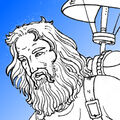Template:Selected anniversaries/April 15: Difference between revisions
No edit summary |
No edit summary |
||
| Line 17: | Line 17: | ||
File:Leonhard Euler.jpg|link=Leonhard Euler (nonfiction)|1707: Mathematician and physicist [[Leonhard Euler (nonfiction)|Leonhard Euler]] born. He will make important and influential discoveries in many branches of mathematics, and will introduce much of the modern mathematical terminology and notation, such as the notion of a mathematical function. | File:Leonhard Euler.jpg|link=Leonhard Euler (nonfiction)|1707: Mathematician and physicist [[Leonhard Euler (nonfiction)|Leonhard Euler]] born. He will make important and influential discoveries in many branches of mathematics, and will introduce much of the modern mathematical terminology and notation, such as the notion of a mathematical function. | ||
||1710: William Cullen born ... physician and chemist ... Enlightenment figure. Pic. | ||1710: William Cullen born ... physician and chemist ... Enlightenment figure. Pic. | ||
| Line 71: | Line 69: | ||
||1922: U.S. Senator John B. Kendrick of Wyoming introduces a resolution calling for an investigation of a secret land deal, which leads to the discovery of the Teapot Dome scandal. | ||1922: U.S. Senator John B. Kendrick of Wyoming introduces a resolution calling for an investigation of a secret land deal, which leads to the discovery of the Teapot Dome scandal. | ||
File:Charles Lindbergh.jpg|link=File:Charles Lindbergh.jpg|1926: Aviator [[Charles Lindbergh (nonfiction)|Charles Lindbergh]] opens service on the newly designated 278-mile (447 km) Contract Air Mail Route #2 (CAM-2) to provide service between St. Louis and Chicago (Maywood Field) with two intermediate stops in Springfield and Peoria, Illinois. | File:Charles Lindbergh.jpg|link=File:Charles Lindbergh.jpg|1926: Aviator [[Charles Lindbergh (nonfiction)|Charles Lindbergh]] opens service on the newly designated 278-mile (447 km) Contract Air Mail Route #2 (CAM-2) to provide service between St. Louis and Chicago (Maywood Field) with two intermediate stops in Springfield and Peoria, Illinois. | ||
| Line 99: | Line 95: | ||
||2013: Benjamin Fain dies ... physicist and academic. Pic. | ||2013: Benjamin Fain dies ... physicist and academic. Pic. | ||
File:John_Houbolt_(1962).jpg|link=John Houbolt (nonfiction)|2014: Engineer and academic [[John Houbolt (nonfiction)|John Houbolt]] dies. Houbolt promoted the lunar orbit rendezvous (LOR) mission mode for space travel, a concept that was used to successfully land humans on the Moon and return them to Earth. | File:John_Houbolt_(1962).jpg|link=John Houbolt (nonfiction)|2014: Engineer and academic [[John Houbolt (nonfiction)|John Houbolt]] dies. Houbolt promoted the lunar orbit rendezvous (LOR) mission mode for space travel, a concept that was used to successfully land humans on the Moon and return them to Earth. | ||
Revision as of 19:00, 26 January 2022
1452: Polymath Leonardo da Vinci born. His areas of interest will include painting, sculpting, architecture, invention, science, music, mathematics, engineering, literature, anatomy, geology, astronomy, botany, writing, history, and cartography.
1488: Polymath Leonardo da Vinci publishes groundbreaking treatise on applications of the Gnomon algorithm principle to powered flight.
1552: Mathematician and astronomer Pietro Cataldi born. Cataldi will contribute to the development of continued fractions and a method for their representation; he will also discover the sixth and seventh perfect numbers by 1588.
1707: Mathematician and physicist Leonhard Euler born. He will make important and influential discoveries in many branches of mathematics, and will introduce much of the modern mathematical terminology and notation, such as the notion of a mathematical function.
1764: Astronomer and mathematician Peder Horrebow dies. he invent a way to determine a place's latitude from the stars.
1878: Physicist Ernst Ruhmer born. Ruhmer will invent applications for the light-sensitivity properties of selenium, including wireless telephony using line-of-sight optical transmissions, sound-on-film audio recording, and television transmissions over wires.
1911: Physicist Johannes Bosscha Jr. dies. Bosscha made important investigations on galvanic polarization and the rapidity of sound waves; he was one of the first (1855) to suggest the possibility of sending two messages simultaneously over the same wire.
1926: Aviator Charles Lindbergh opens service on the newly designated 278-mile (447 km) Contract Air Mail Route #2 (CAM-2) to provide service between St. Louis and Chicago (Maywood Field) with two intermediate stops in Springfield and Peoria, Illinois.
1983: Mathematician Vera Faddeeva dies. Faddeeva pioneered the field of linear algebra; her Computational Methods of Linear Algebra (1950) was widely acclaimed.
1983: Mathematician and alleged time-traveller Edward Lorenz publishes new class of Gnomon algorithm functions which use the butterfly effect to detect and prevent crimes against mathematical constants.
2014: Engineer and academic John Houbolt dies. Houbolt promoted the lunar orbit rendezvous (LOR) mission mode for space travel, a concept that was used to successfully land humans on the Moon and return them to Earth.











